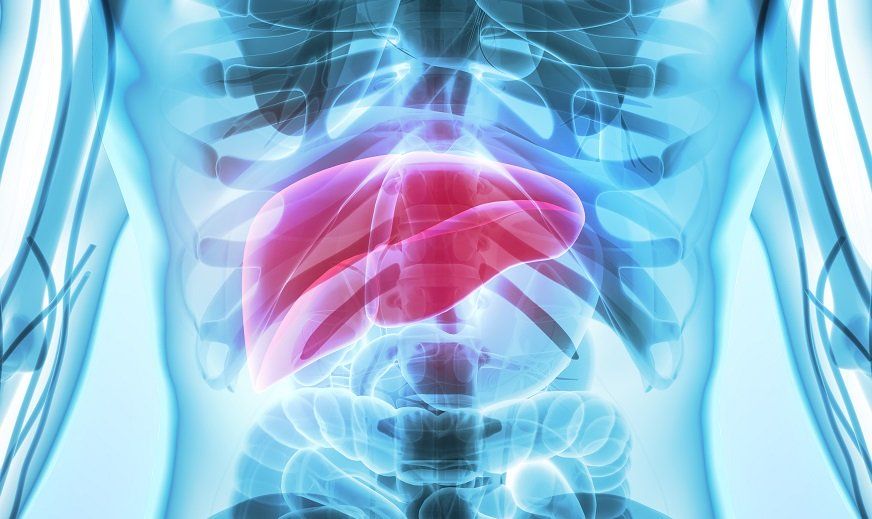Direct-Acting Antivirals Improve HCC-Free Survival, Liver Function in Patients with HCV Decompensated Cirrhosis
Results from the systematic review and meta-analysis demonstrated the positive effect of DAA therapy on overall survival, HCC-free survival, and liver function among patients with HCV decompensated cirrhosis compared to a non-DAA control group.
Credit: Adobe Stock

Findings from a recent systematic review and meta-analysis are providing clinicians with an overview of the impact of direct-acting antiviral (DAA) treatment on survival, hepatocellular carcinoma (HCC) occurrence, and liver function in patients with hepatitis C virus (HCV) decompensated cirrhosis.
The overall survival and HCC-free survival probabilities at 24 months were both 90% among those treated with DAAs, with treatment also resulting in notable reductions in Model for End-Stage Liver Disease (MELD) scores indicative of improved liver function.1
“Our study contributes valuable information beyond previous studies that mainly reported SVR rates after DAA treatment,” wrote investigators.1 “We provided additional clinically relevant insights, including survival rates, HCC-free survival, HCC occurrence rates, and MELD score improvement.”
The World Health Organization estimates 58 million global cases of HCV, with about 1.5 million new infections occurring every year. Although DAAs can cure more than 95% of people with hepatitis C infection, little is known about their use in patients with HCV and decompensated cirrhosis. While liver fibrosis is reversible, cirrhosis is not - thus, understanding the potential benefits of DAAs in this patient population is essential for achieving the best clinical outcomes possible.2
To assess the long-term clinical outcomes of DAA treatment in patients with HCV decompensated cirrhosis, a team of investigators led by Tanawat Jongraksak, MD, of the division of gastroenterology and hepatology at Ramathibodi Hospital at Mahidol University in Thailand, systematically searched for relevant studies in MEDLINE, SCOPUS, and the Cochrane Central Register of Controlled Trials (CENTRAL) databases from their inception to June 30, 2023, and extracted data to estimate the relative treatment effects of DAA compared no DAA.1
Investigators assessed the eligibility of each article by screening titles and abstracts. Studies were considered eligible if they were randomized controlled trials, prospective or retrospective cohorts with a sample size > 10, included adult patients > 18 years of age with decompensated HCV cirrhosis, and included any interferon-free DAA therapy as the treatment group compared with a control group receiving only the standard of care for decompensated cirrhosis. For inclusion, studies were also required to report 1 or more of the following outcomes: overall survival, HCC occurrence, liver function tests, MELD score, or Child-Pugh score after treatment.1
Of the 5,691 articles initially identified, investigators reviewed 51 for eligibility and 8 met the inclusion criteria. Among them, 5 studies reported overall survival, 4 reported HCC occurrence, and 3 reported MELD scores. A total of 3430 participants, including 2603 in the DAA group and 1999 in the non-DAA group, were represented in the 8 studies included in the systematic review.1
The mean age of participants ranged from 51 to 59 years, with a mean MELD score of approximately 13. The follow-up time varied from 6 to 40 months. All studies used interferon-free DAA regimens with sofosbuvir-based treatments. Using the Cochrane Risk of Bias in Non-randomized Studies of Interventions (ROBINS-I) tool, investigators determined all studies reported a moderate risk of bias in various domains, including confounding, intervention classification, deviation from intervention, measurement of outcomes, and selection of reported results.1
The study’s primary outcome was the overall survival rate. Secondary outcomes included HCC-free survival, HCC occurrence rate, and improvement in the MELD score.1
Upon analysis, the DAA group exhibited a greater overall survival rate than the control group (P < .001). At 12, 18, and 24 months, the survival rates in the DAA group were 95%, 92%, and 90%, respectively, whereas the corresponding survival probabilities in the control group were 89%, 94%, and 80%, respectively. The relative treatment effect was estimated with an HR of 0.48 (95% confidence interval [CI], 0.39 to 0.60), indicating patients who received DAAs had a significantly lower risk of death.1
Further analysis revealed the DAA group also had a greater probability of HCC-free survival. At 12 and 24 months, the HCC-free survival probabilities were 96% and 90% for the DAA group and 94 and 85% for the control group, respectively.1
Investigators noted patients with decompensated HCV cirrhosis who received DAA treatment had a 28% lower risk of HCC than the control patients (HR, 0.72; 95% CI, 0.52 to 1.00; P = .05). Additionally, the MELD score was significantly lower in this group than in the control group, with a mean difference of −7.75 (95% CI, −14.52 to −0.98; P = .020).1
“Despite the current guidelines recommending DAA treatment for all patients, the outcomes of DAA treatment in decompensated cirrhosis remain unclear, mainly because decompensated cirrhosis is often considered a point of no return,” investigators concluded.1 “However, the findings of this meta-analysis confirmed the benefits of DAA treatment in patients with HCV-related decompensated cirrhosis, highlighting the need for further research that may include a cost-effective analysis of DAAs in this population.”
References:
- Jongraksak T, Chuncharunee A, Intaraprasong P, et al. Outcomes of direct-acting antivirals in patients with HCV decompensated cirrhosis: a systematic review and meta-analysis. Front. Med. 10:1295857. doi: 10.3389/fmed.2023.1295857
- World Health Organization. Hepatitis C. July 18, 2023. Accessed December 21, 2023. https://www.who.int/news-room/fact-sheets/detail/hepatitis-c
2 Commerce Drive
Cranbury, NJ 08512
All rights reserved.